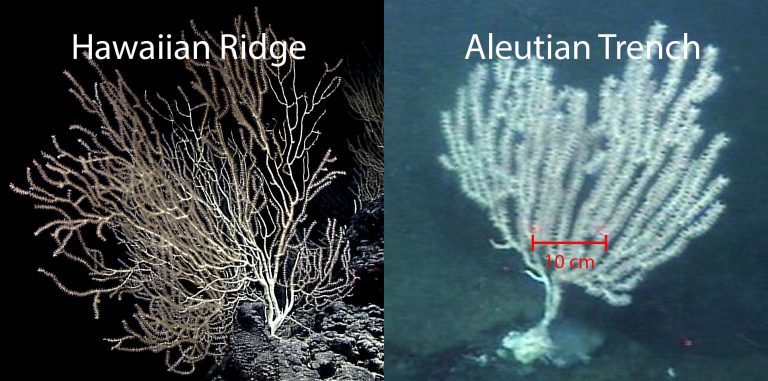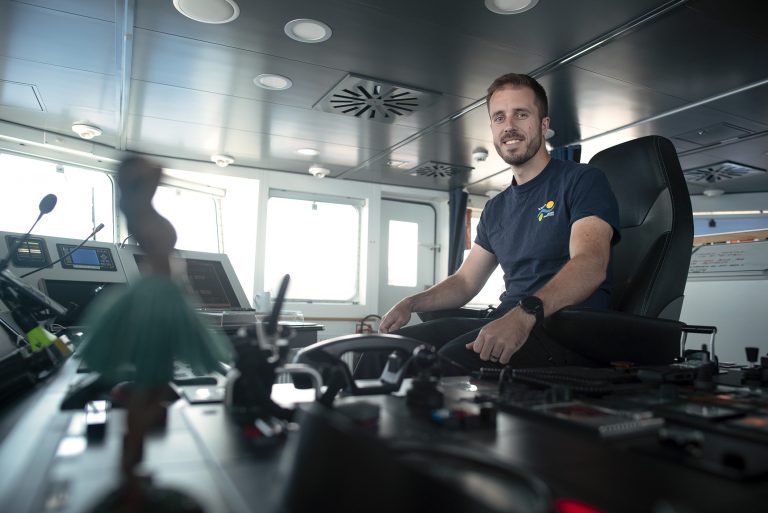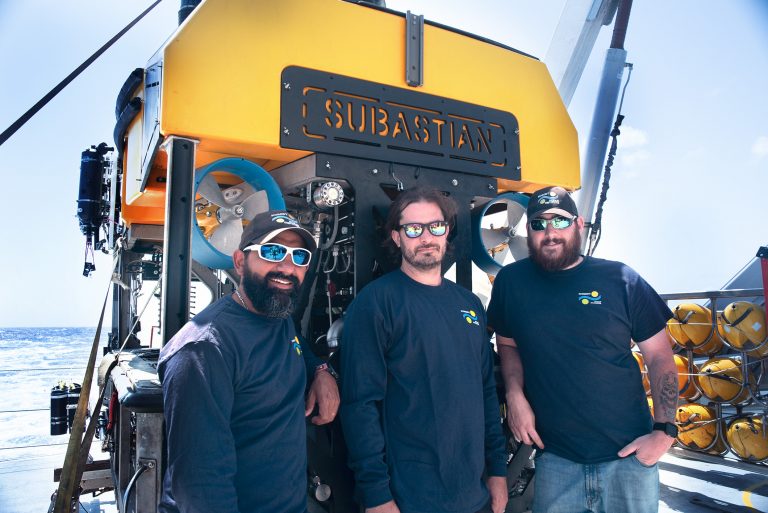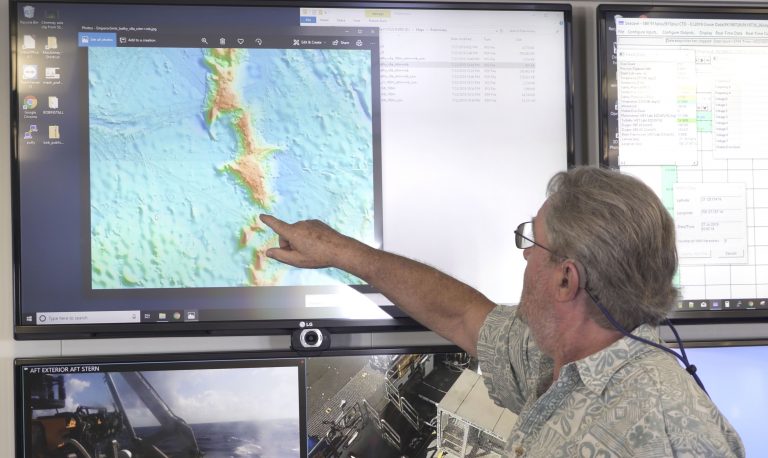Falkor will spend sixteen very intense days mapping and exploring seven of the Emperor Seamounts, an ambitious goal that requires covering a long distance over the ocean simply to get to the first destination. Just about halfway, there will be a quick stop at Hess Rise, where ROV SuBastian will dive for the first time around this unexplored underwater mountain, enabling those watching to get a taste of what is to expected to come. In the meantime, here are five things you should know about the Deep Coral Diversity at Emperor Seamount expedition:
1: There appears to be a definite, yet invisible boundary – and we are here to find it.
In the past, scientists have studied deep-sea corals that live in the Aleutian Ridge, near Alaska in the far North Pacific; they have also studied corals that live in the Central Pacific, around Hawaii. They have found that the species of corals in those two places are completely different, so they are want to discover the location where this transition between North and South species occur. The Emperor Seamounts form a chain that runs from North to South, and they are the only seamounts connecting both Aleutian and Hawaiian ridges. The experts suspect that somewhere along the chain there is a boundary that separates the biodiversity, creating two completely distinct biogeographic areas in the North Pacific Ocean. The team will reach a northern section of the Emperor Seamount Chain and begin a series of ROV dives, moving south. They will observe and describe the lifeforms they encounter in hopes of determining where the boundary between the coral communities is.

2: Seamounts are clusters of life.
There is a reason why ROV SuBastian is visiting seamounts so often. Seamounts are very important underwater geological structures that gather a concentration of deep-sea life. When water currents come across a seamount, they are forced to go around (or over) it to continue their course. The higher flux of water concentrates nutrients, which is very attractive for marine life to consume. Depending on their depth, seamounts are known as “aggregating devices” for fish, which is why many times they will be the focus of deep-sea trawling and fisheries. The acceleration of currents will also create a “wind sweep” effect, preventing sediments from accumulating and providing corals with the kind of hard substrate that enables them to colonize and expand. Given the fact that corals are ecosystem engineers, where the corals form, a suite of deep-sea life will follow.
3: This expedition is full of first times for crew, researchers, and science.
There are many reasons why this research cruise is going to be special. One is the fact that it will have many first’s. One example is that this will be the first expedition for Jason Garwood as Captain. “It is a new challenge for me, a new position, and I’m enjoying it very much,” he shares. “It is a ship I trust, and more importantly, a crew I trust.”

New experiences are also in store for the ROV team. This will be the first time that Jason Rodriguez leads SuBastian’s team, and that Cody Peyres supervises the operations. For Zach Bright, it will be the first time he flies an ROV for scientific purposes, which supposes a very different way of maneuvering and interacting with the environment. “It’s a lot more fun!” shares Jason Rodriguez.
Special personnel (a.k.a. the scientists and Artist-at-Sea) will also be adding a milestone to their progress. This is the first time that Becca Lensing and Christine Lee go to sea, and the first days have proven challenging as the two wait patiently for their sea-legs to kick in.
Last – but certainly not least – this will be the first time that many of these seamounts are mapped in high resolution, and it will be the very first time they are explored with a Remotely Operated Vehicle. One thing is for sure, many discoveries will be made over the course of the next few weeks.

4: No Tech, No Seamount (or “Know Tech, Know Seamount”)
Everything we know about these seamounts has come from indirect observations that technology has made possible. The scientists have been able to identify the different communities that inhabit the area based on samples collected through deep-sea trawling. They are also aware of the very presence of the seamounts themselves because of satellite altimetry, which provides a rough estimate of the size and shape of the structures. Today, technology will enable the experts to test their hypothesis and study the seafloor in ways that are not only exponentially more precise, but much less invasive. ROV SuBastian avoids any collisions or interactions that impact the ecosystem and will take only the samples that are absolutely necessary. The vehicle’s cameras and lights permit detailed observations that would have been impossible just a few years ago. By identifying environmental DNA, (DNA signatures suspended in the water), the scientists will be able to detect what kind of lifeforms have been present in the area. Examining the core of small coral samples, the scientists will be able to determine water properties dating back hundreds or even thousands of years. Those are but a few examples of how technology will be positively essential in the advancement of our knowledge of this area in particular, and of the ocean and planet Earth in general.
5: Remote Yet Relevant
Even though these ecosystems may seem very far and removed from human experience, they actually play an important role in human life. There is still much we ignore (or do not comprehend) about the deep sea, but we are beginning to understand that it plays a fundamental role in the overall health of the oceans, on which we depend. By visiting these sites, scientists are able to survey biodiversity and discover practical applications for that knowledge. For instance, microbes that live on the corals are capable of producing novel compounds that, from a biotechnology standpoint, could potentially become new antibiotics or cancer therapeutics. Understanding what lives below the water on the Emperor Seamounts will influence management decisions, and will produce a baseline that will inform us of changes in the communities due to climate change, deep-sea mining, deep-sea trawling, or any other factors. If we decide not to care and ignore what is down there, we may lose many of the resources that are available and that we will need in the future.


